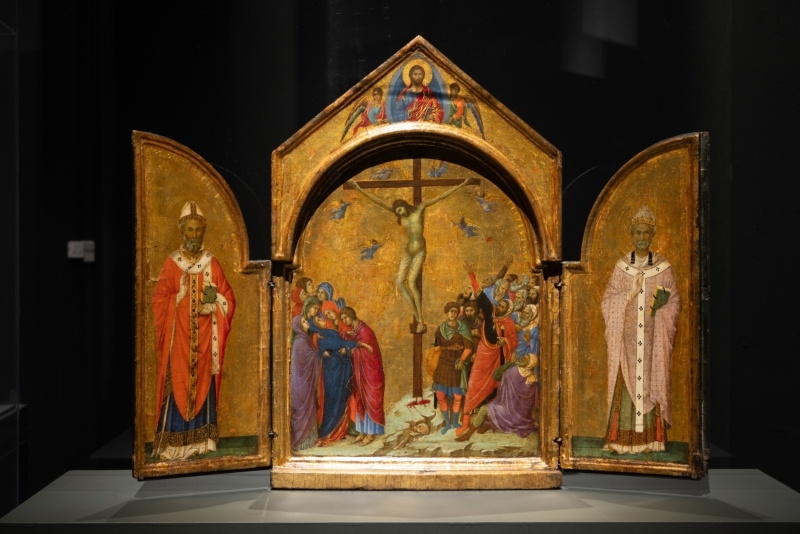
Installation view of Siena: The Rise of Painting, 1300–1350, on view October 13, 2024–January 26, 2025 at The Metropolitan Museum of Art. (Photo: Eileen Travell, Courtesy of The Met)
Florence is often the city that comes to mind when we think of the Italian Renaissance. It’s where Botticelli was born, where Michelangelo came into his own, and where the powerful Medici family helped fund a generation of artists. However, many don’t realize that the origins of the Renaissance sit about 50 miles south in the town of Siena.
An important banking center in the 13th and 14th centuries, Siena was Florence’s main rival, and its rich Ghilbelline merchants invested heavily in the arts. Now, for the first time, a major museum in the United States is exploring Siena’s contributions to this period. The Metropolitan Museum of Art’s Siena: The Rise of Painting, 1300–1350, examines this critical point in history by bringing together work by some of the greatest painters of the 14th century.
On view until January 26, 2025, the show focuses on works by Sienese masters Duccio, Pietro and Ambrogio Lorenzetti, and Simone Martini and shows how they helped define Western art. Drawing on collections from across the globe, the show features over 100 artworks by this group of remarkable artists. From paintings and sculpture to metalwork and textiles, the public will have a unique opportunity to see these pieces side by side.
“Siena was an epicenter of artistic innovation and ambition in the 14th and 15th centuries. Its impact on the development of European art and on the development of painting cannot be emphasized enough,” shares Max Hollein, The Met’s Marina Kellen French director and chief executive officer. “This monumental exhibition will bring together the most important group of early Sienese paintings ever assembled outside of Siena—offering a once-in-a-lifetime chance to explore the influence of this extraordinary artistic center.”
From Duccio’s expressive religious icons to the narrative genius of the Lorenzetti brothers, these artists laid the foundations for generations of future artists. Whether they were beginning to explore perspective or imbuing their work with emotional sensitivity, the collective force of these artists helped break art from the static icons that came before it and helped guide it into the future.
“The distinctive artistic language of Duccio, the Lorenzetti brothers, Simone Martini, and their contemporaries completely recast the course of European painting,” shares Stephan Wolohojian, John Pope-Hennessy curator in charge of European paintings at The Met. “Examining the bold work of these Sienese artists allows us to trace the germination of many of the key ideas that preoccupied artists working in Italy in the following centuries.”
While none of these painters survived the Black Death, an event that ravaged Siena along with the rest of Europe, their influence could not be stopped. Siena would never quite recover, and a mix of the plague, economic downturns, and unstable politics would see its influence wane as Florence only rose to power. Still, the Met’s extraordinary exhibition is a reminder of the incredible contributions of this city and its artists, placing the city as a rightful forebear of the Italian Renaissance.
Siena: The Rise of Painting, 1300–1350, is currently on view at the Metropolitan Museum of Art until January 26, 2025, before moving to London’s National Gallery from March 8, 2025, through June 22, 2025.
A new exhibition at the Metropolitan Museum of Art highlights Siena’s role in laying the foundations of the Italian Renaissance.
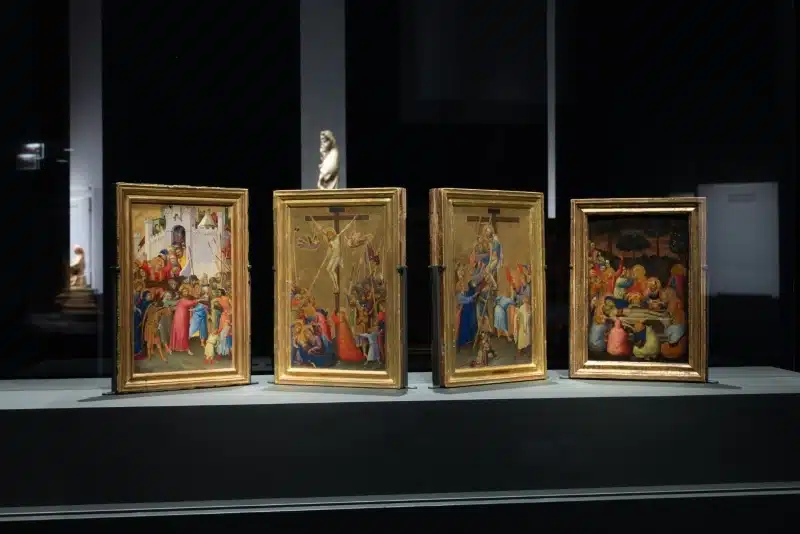
Installation view of Siena: The Rise of Painting, 1300–1350 (Photo: Eileen Travell, Courtesy of The Met)
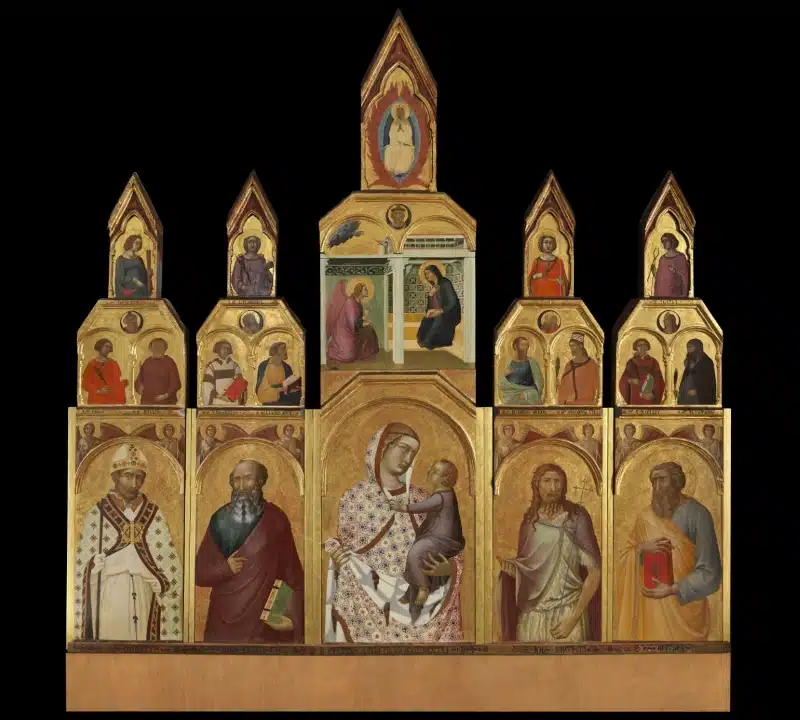
Tarlati Altarpiece by Pietro Lorenzetti. ca. 1320. Tempera and gold on panel. Santa Maria della Pieve, Arezzo (Photo: © Foto Studio Lensini Siena)
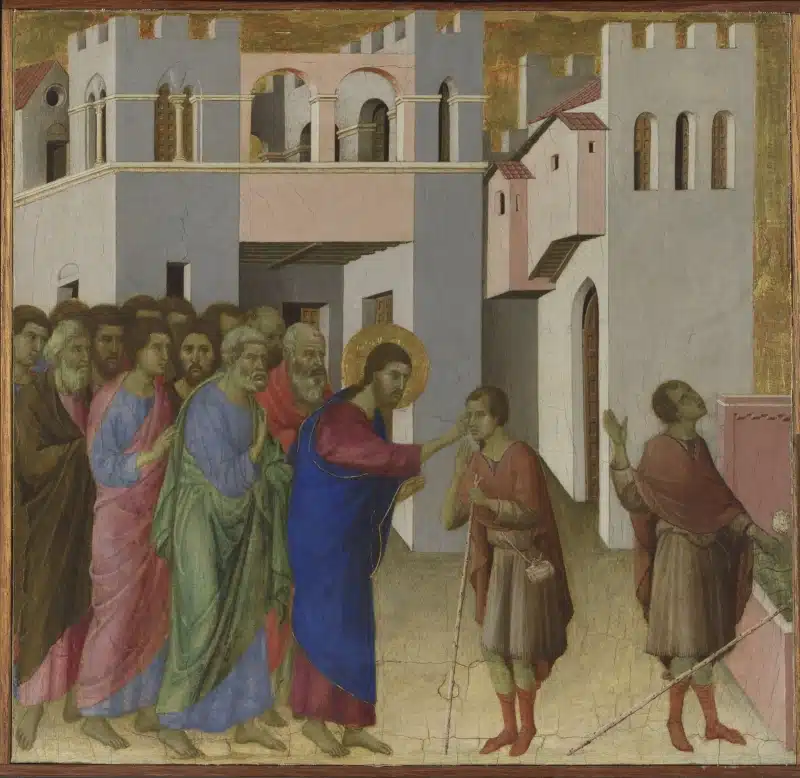
The Healing of the Man Born Blind by Duccio. ca. 1307/8–11. Tempera and gold leaf on panel. The National Gallery, London
(Photo: © The National Gallery, London)
“The distinctive artistic language of Duccio, the Lorenzetti brothers, Simone Martini, and their contemporaries completely recast the course of European painting.”
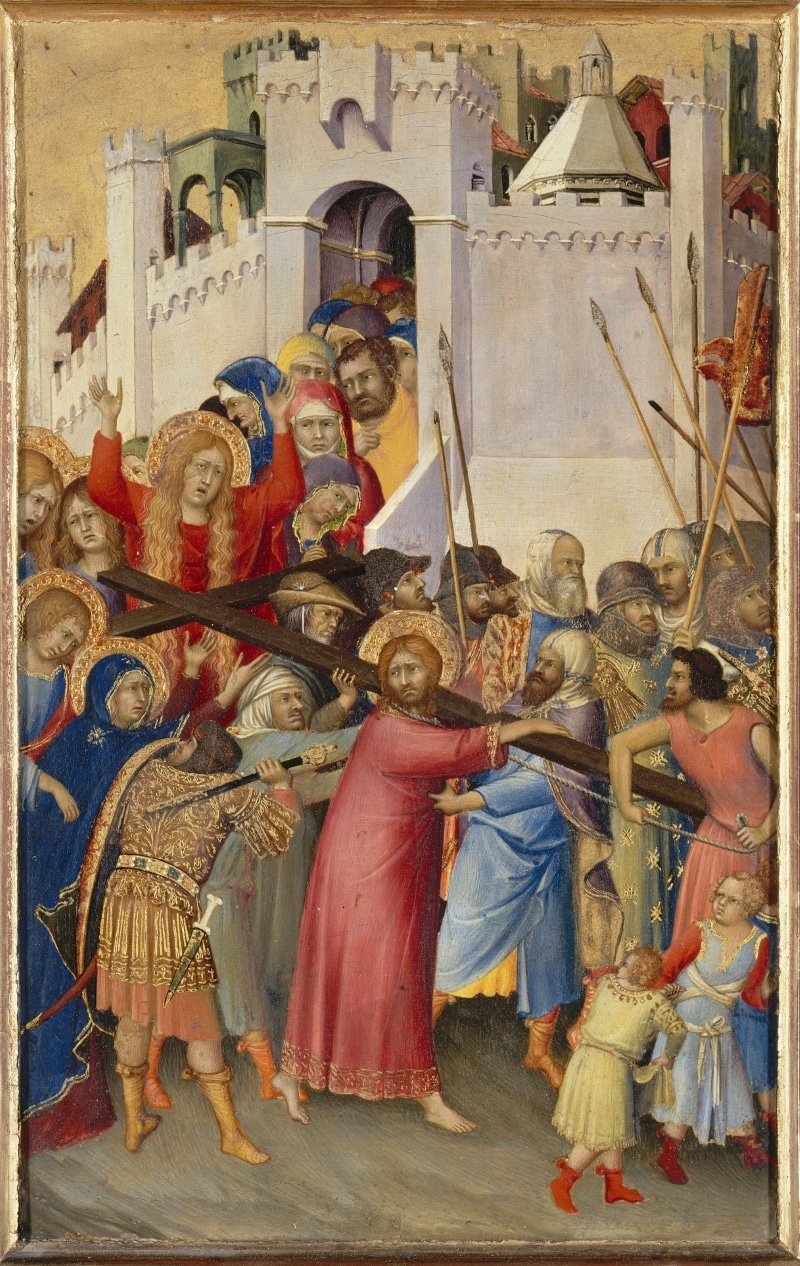
“Christ Carrying the Cross” by Simone Martini. ca. 1335. Tempera and gold on panel. Musée du Louvre, Paris (Photo: © RMN – Grand Palais (musée du Louvre) / Gérard Blot)
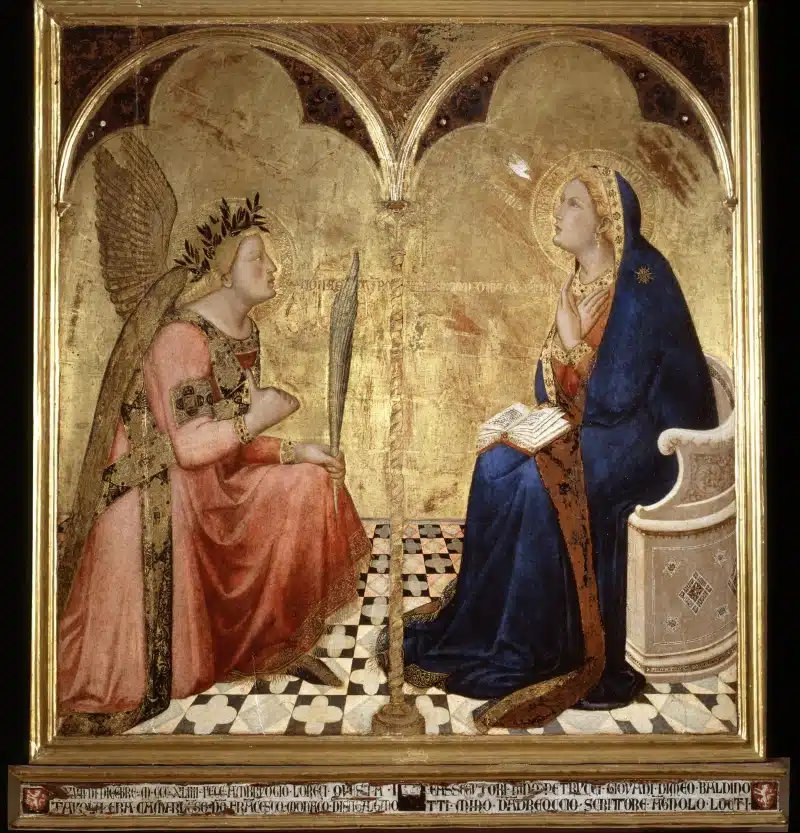
The Annunciation by Ambrogio Lorenzetti. Tempera and gold leaf on panel. Pinacoteca Nazionale, Siena (Photo: © Foto Studio Lensini Siena)
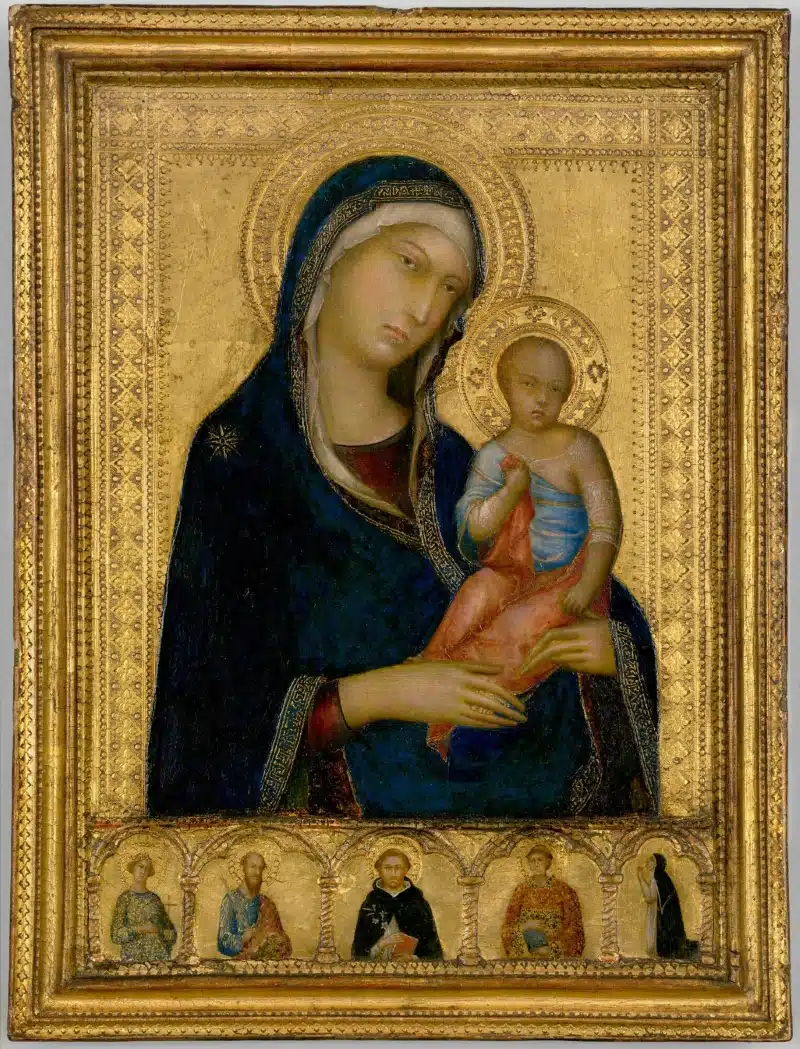
Virgin and Child with Four Saints and a Dominican Nun by Simone Martini. ca. 1325. Tempera and gold leaf on panel. Isabella Stewart Gardner Museum, Boston (Photo: © Isabella Stewart Gardner Museum, Boston)
This is a unique opportunity to see these pieces of art history, which have been pulled from collections around the world.
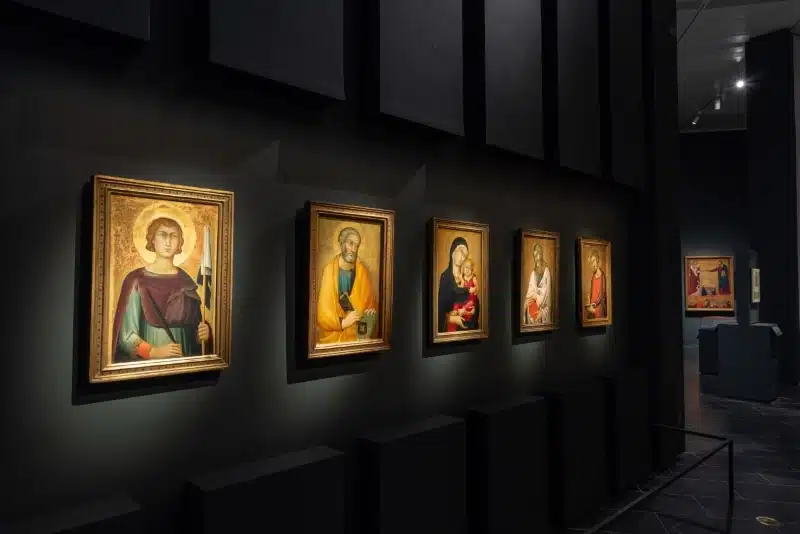
Installation view of Siena: The Rise of Painting, 1300–1350 (Photo: Eileen Travell, Courtesy of The Met)
My Modern Met granted permission to feature photos by the Metropolitan Museum of Art.
Related Articles:
9 Famous Renaissance Artists Whose Work Transformed the Art World
Who Is Giotto? Learn About the Life and Art of the Father of the Renaissance
How Much Do You Know About the Italian Renaissance? Test Your Art Knowledge [Quiz]
Learn About Masaccio, the Italian Renaissance Painter With a Short Life but Long Legacy
